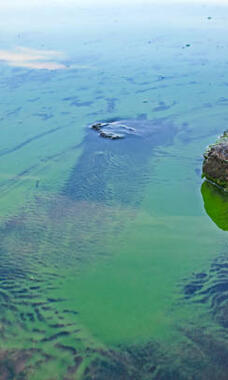Cyanobacteria, also known as blue-green algae, are common in Lake Champlain and other Vermont waters. Some types of cyanobacteria can release natural toxins or poisons (called cyanotoxins) into the water.
The Cyanobacteria (Blue-Green Algae) Tracker allows the public to check recent cyanobacteria bloom reports at shoreline sites and recreational swimming areas of Lake Champlain and various inland lakes in Vermont.
Private water supplies are monitored and maintained by their owners, so it is important for them to do their own water testing and maintenance to make sure their drinking water remains safe.
Find definitions of the terms used for Environmental Public Health Tracking data.
Gross alpha radiation is a type of energy released when certain radioactive elements decay or break down and can be found in your drinking water.
Investigators both in the U.S. and abroad have shown relationships between short- and long-term exposure to air pollution and the increased risk of heart attack and other forms of heart disease.
What You Need to Know About Nitrates and Nitrites in Drinking Water Nitrogen can take different forms in nature and is important for life in both plants and animals. The most common form of nitrogen found in well water is...
Smoking and radon are the leading causes of lung cancer. If you smoke and your home has high levels of radon, your risk of getting lung cancer is especially high.
What You Need to Know About Radon in Drinking Water Radon is a naturally occurring radioactive gas. Radon may be present in both soil and water. Soil is the most common source of radon in your home. Well water that...
Exposure to hazards in the physical environment—secondhand smoke, lead, mercury, air pollution, pesticides, and other toxins—may increase the likelihood of poor reproductive health outcomes.

